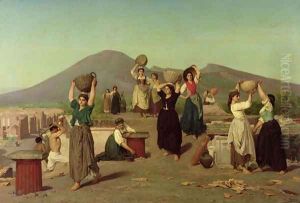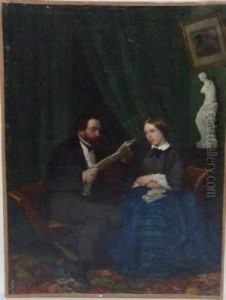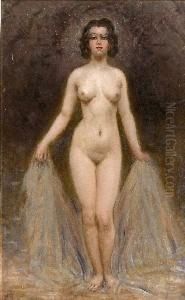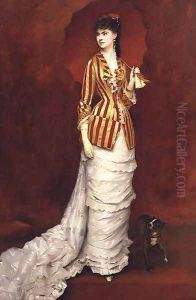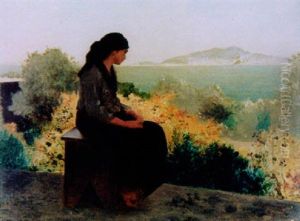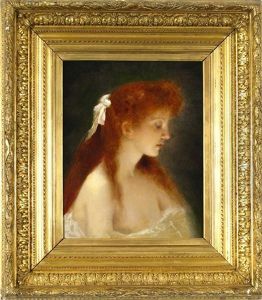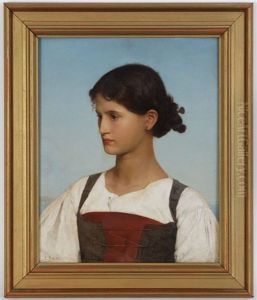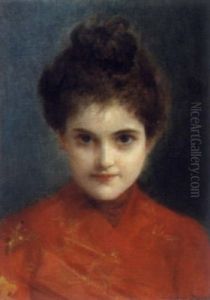Edouard Alexandre Sain Paintings
Édouard Alexandre Sain was a French painter born on April 29, 1830, in Cluny, France. He was known for his genre paintings, portraits, and historical scenes. Sain's artistic talents were recognized at a young age, and he went on to study at the École des Beaux-Arts in Paris under the guidance of François-Édouard Picot, a renowned Neoclassical painter of his time.
Sain's work was influenced by the academic traditions of the 19th century, and he became skilled at capturing the fine details and textures in his paintings. His genre scenes often depicted the daily life of French citizens, particularly the bourgeoisie and the peasantry. He was adept at portraying the subtleties of human interactions and the nuances of social customs.
Throughout his career, Sain exhibited his work at the Paris Salon, an official art exhibition of the Académie des Beaux-Arts in Paris. His paintings were well-received, and he gained a reputation for his ability to paint with precision and sensitivity. Sain's success at the Salon helped to establish his career, and he received commissions from wealthy patrons, including members of the French aristocracy.
In addition to his genre paintings, Sain also painted portraits of notable individuals of his time. His approach to portraiture was marked by an emphasis on realism and character, capturing the personality and status of his subjects with a keen eye for detail.
Édouard Alexandre Sain's contribution to French art in the 19th century was significant, as he maintained the traditions of academic painting during a period of artistic upheaval and the rise of Impressionism. His dedication to the craft of painting and his ability to represent the social milieu of his time left a lasting impact on the French art scene.
Sain passed away on October 25, 1910, in Paris. His works continue to be appreciated by art historians and collectors, and they can be found in various museums and private collections around the world. His legacy is that of a skilled painter who captured the essence of 19th-century French society with elegance and precision.

